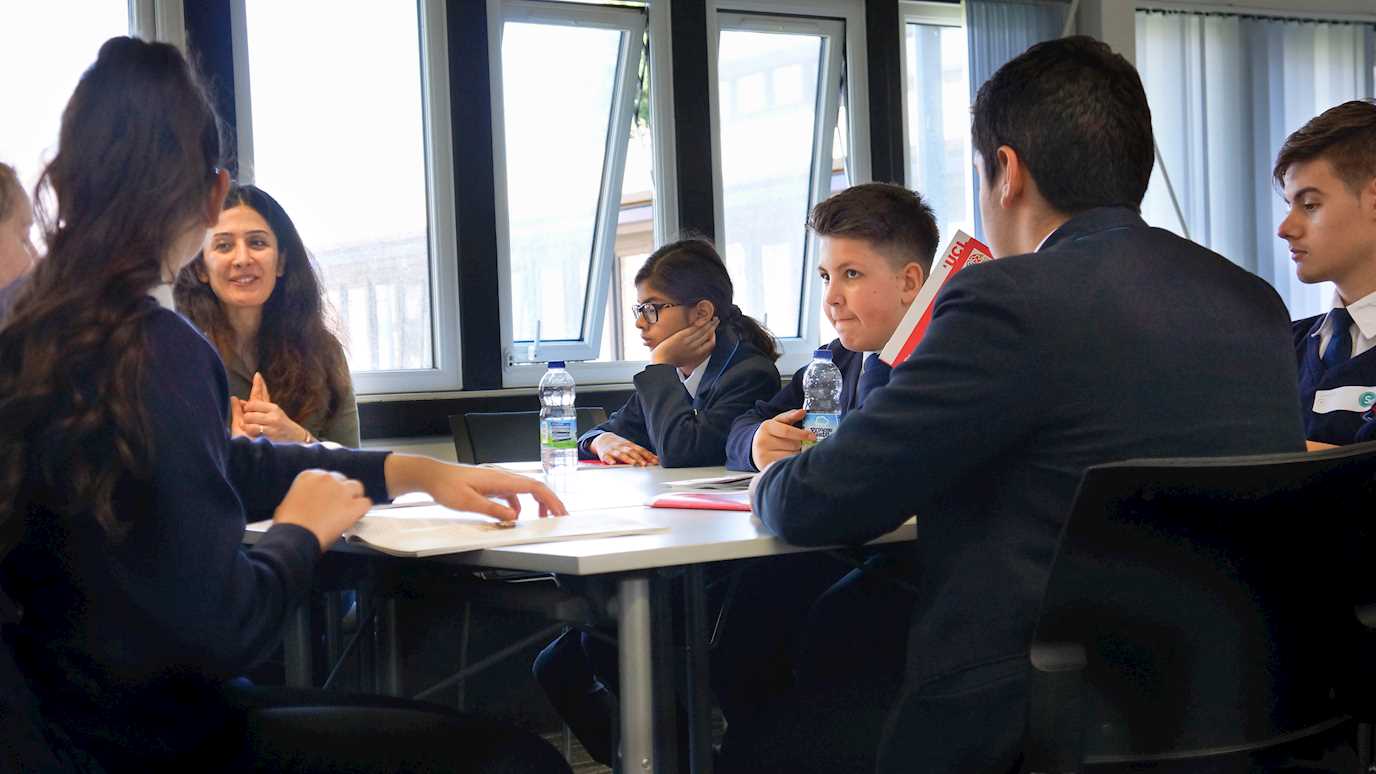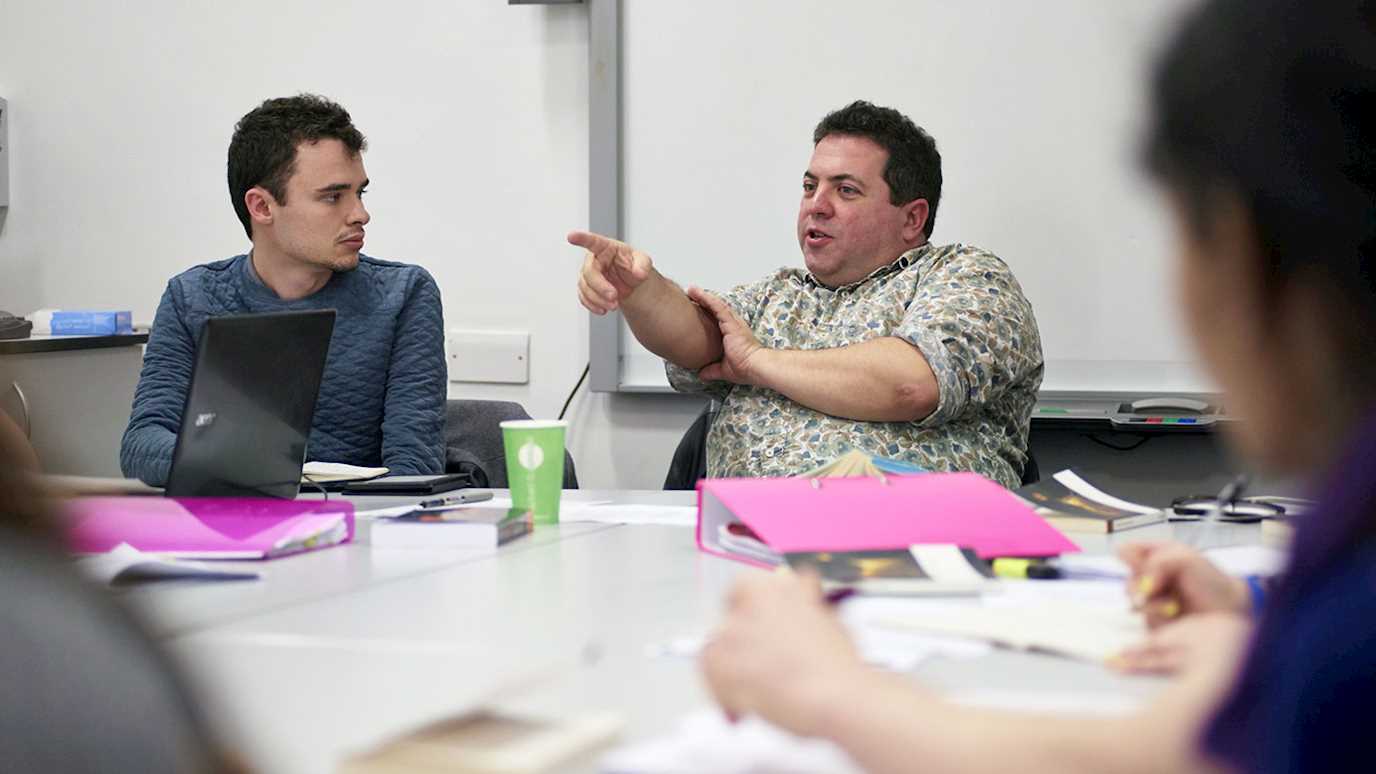Professor Tim Armstrong on Beloved
Key points
- Beloved is a novel of fragments, and fragmented narratives, which makes it difficult to offer one cohesive reading of the novel
- It is easy to overlook the murder of the child, in spite of the fact it is present from the outlook
- The novel is a different book for different people: there is such a richness of narrative, relationship, and history, that each reader can take a different reading of Beloved from the text
- Beloved engages with memory and a sense of loss. It asks what was lost in slavery, including: history, language, memory, family, culture, homeland and selfhood.
- The novel is also concerned with melancholic heritage. For Morrison, it is integral that her community remembers the legacy of slavery.
Quotations
- 'I am Beloved and she is mine. I see her take flowers away from leaves she puts them in a round basket the leaves are not for her she fills the basket she opens the grass I would help her but the clouds are in the way how can I say things that are pictures I am not separate from her there is no place where I stop her face is my own and I want to be there in the place where her face is and to be looking at it too a hot thing'
Beloved, p. 248. - 'It was not a story to pass on'
Beloved, p. 323. - 'By and by all trace is gone, and what is forgotten is not only the footprints but the water too and what it is down there. The rest is weather. Not the breath of the disremembered and unaccounted for, but wind in the eaves, or spring ice thawing too quickly. Just weather. Certainly no clamor for a kiss.'
Beloved, p. 275. - 'She might be hurrying across across a field, running practically, just to get to the pump quickly and rinse the chamomile sap from her legs. Nothing else would be in her mind ... Nothing. Just the breeze cooling her face as she rushed towards water'
Beloved, p. 6. - 'Every day she saw the dawn, but never acknowledged or remarked its colour. There was something wrong with that. It was as though one day she saw red baby blood, another day the pink gravestone chips, and that was the last of it'
Beloved, p. 39. - 'She will forego the most violent sunsets, stars as fat as dinner plates, and all the blood of autumn and settle for the palest yellow if it comes from her Beloved'
Beloved, p. 143.
Further reading
Digests written by Laurie McRae Andrew
Holden-Kirwan, Jennifer L. “Looking into the Self That Is No Self: An Examination of Subjectivity in Beloved,” African American Review 32, no. 3 (1998): 415–26.
Holden-Kirwan explores how Beloved forces its readers to confront the existence and conditions of slavery. In doing so, she discusses three aspects of subjectivity in the novel. First, she explores the significance of the experiences of the Middle Passage to Beloved’s character. Although Denver interprets Beloved’s experience before arriving at 124 as an afterlife, they more closely resemble the experience of a transatlantic crossing on a slave ship, and readers with some knowledge of the experience of the Middle Passage will find the details provided in the narrative vivid and tangible. This vivid representation of the slave ship experience functions as a ‘primal scene’ for Beloved – a crucial event whose significance shapes her subsequent experience. In particular, the suicide of Beloved’s mother aboard the ship produces a sense of betrayal and abandonment that returns when Beloved feels herself abandoned by Sethe. It is when these aspects of the primal scene return, and Beloved loses control of her memory of the experience, that she disappears.
The identity of Beloved perplexed readers, and Holden-Kirwan goes on to explore this issue, arguing that Beloved should be read not as a reincarnation of Sethe’s daughter, nor a combination of Sethe’s daughter and mother, nor as a ‘real,’ non-supernatural woman, but as an embodiment of Sethe’s mother alone. There are a number of similarities between descriptions of Beloved and Sethe’s memories of her mother, and ultimately Beloved rejects Sethe’s attempt to play the role of mother while Sethe abandons the mother position and falls into the position of Beloved’s daughter. Holden-Kirwan explains the characters’ inability to recognise each other’s identities by referring to Lacan’s concept of méconnaissance (misrecognition): the gaze of the other confirms the subject’s identity, but does not determine the form that identity takes. Instead, the gaze projects a screen onto the object, and it is as the level of this screen that identity is formed. The identities of the characters in the novel are formed by the screens they project onto one another. This leads to misrecognition throughout the novel, as characters’ perceptions of each other are determined by what they expect to see and hear.
Lastly, Holden-Kirwan discusses the struggle of the novel’s characters to attain some form of subjectivity in a context in which they are reduced by slavery to commodities; i.e. to objects. Sethe attempts to access subjectivity through daughterhood, but she is denied this because of her mother’s inaccessibility and death. She then seeks subjectivity in motherhood, but this is complicated by the context of slavery in which a mother’s daughters are property of the slave owner; Sethe’s killing of her child is an attempt to insist upon her own subjectivity as a mother. Beloved seeks a sense of identity in Sethe as a version of the mother she lost on the slave ship, but Sethe’s failure to play this role denies her this. Denver, on the other hand, does manage to assert her subjectivity as the novel closes, recognising that her own wellbeing as well as Sethe’s depends on her finding a job; African Americans who were able to attain subjectivity despite the experience and legacy of slavery did so by their own assertion, since American society was reluctant to acknowledge them as valid citizens. By closing with Denver, Holden-Kirwan is able to argue that Morrison does ultimately grant the prospect of subjectivity to her characters.
Fowler, Doreen. ‘“Nobody Could Make It Alone”: Fathers and Boundaries in Toni Morrison's Beloved’. MELUS: Multi-Ethnic Literature of the U.S. 36, no. 2 (2011): 13-33. https://muse.jhu.edu/
Fowler’s reading is focused on the dilemma posed to former slaves by the need to find ways into the community and become part of a social order: how to risk engagement with a white-dominated society that works to appropriate black subjects? Fowler draws on psychoanalytic theories from Jessica Benjamin, Julia Kriesteva and Jaques Lacan to explore the crucial role father or third-party figures play in forming boundaries that both distinguish the subject and allow for alliances with others in a social order. The father is the first ‘outsider’ to intervene in the unitary relation of mother and child, and therefore plays a key role in introducing the child to a sense of difference that enables its individuation with the social order. White and black, male and female identities are formed by a balance of sameness and difference, and in Beloved it is the father figure who models this balance in order to show the way for the child to negotiate these social and cultural identities. Under slavery, though, the role of the biological, paternal father is undermined by a social order in which the children of black slaves are defined as property of white slave-owners. As a result, Beloved shows how this father role may be played by both male and female, black and white.
The relationship between Sethe and Denver has not been successfully disrupted by a father figure, which explains their isolation from the community; Beloved herself is an embodiment of this uninterrupted mother/child relation. The arrival of schoolteacher at 124 is a perversion of this paternal intervention, illustrating how slavery attempts to erase the father/child relationship and replace it with a master/slave relationship; Sethe’s killing of her child is an attempt to resist this. But the novel also shows a number of genuine paternal interventions. Hi Man’s leading of the slaves’ escape from the underground cells is one example, enabling the slaves to symbolically emerge from the unity represented by the chain into cultural individuation. A number of characters also carry out paternal interventions in the relationship between Sethe and Denver: Baby Suggs, Paul D, Amy Denver, Bodwin, Lady Jones, Stamp Paid and the singing women who attempt to exorcise Beloved from the house all form a series of fatherly interventions that provide models for Denver to negotiate her way towards social and cultural individuation. Showing the range of possibilities for different paternal interventions by different father figures (both male and female and black and white), the novel charts ways into the world for former slaves who have been denied the loving mother-father ensemble that enables access to the social order. Doing so, it forms a call to people of all races and genders to assume to the father’s socialising role by balancing attachment to others with differentiation from them.
Wyatt, Jean. 1993. ‘Giving Body to the Word: The Maternal Symbolic in Toni Morrison's Beloved’. PMLA 108 (3). Modern Language Association: 474–88. doi: 10.2307/462616
In Beloved, Toni Morrison expresses the dislocations and violence of slavery through disruptions in language. The novel tells the ‘unspeakable’ story of Sethe, a slave mother whose act of infanticide leaves a gap in family narrative; bars her surviving daughter, Denver, from language use; and hinders her own ability to speak. Morrison's inclusion of voices previously left out of historical and literary narratives disturbs the language of the novel itself. The Africans piled on the slave ships, the preverbal child who comes back in the shape of the ghost Beloved, and a nursing mother who insists on the primacy of bodily connection: the expression of these subjects’ heretofore unspoken experiences and desires distorts discursive structures, especially the demarcations that support normative language. Morrison's textual practice challenges Lacan’s assumptions about language and language users, and her depiction of a social order that performs some of the functions of mothering challenges his vision of a paternal symbolic order based on a repudiation of maternal connection.
Web links
- Toni Morrison’s Nobel Prize page
- An interview with Morrison on American National Public Radio
- The Radical Vision of Toni Morrison in the New York Times
























